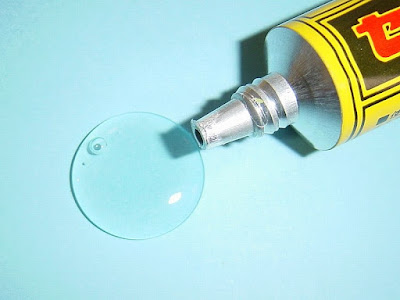The regular glue is made up of a variety of chemicals called polymers. These polymers are long strands that are either sticky or stretchy. Glue manufacturers have to find just the right combination of sticky and stretchy polymers to make the best glue. Water is used with most of the glues to keep it in the liquid state.
When you put glue on a piece of paper, water is exposed to air. The water eventually evaporates. As the water evaporates, the glue dries and hardens. All that's left are the sticky polymers that hold things together. This process is called mechanical adhesion.

When white glue is inside a bottle, there's not enough air inside the bottle to cause the water to evaporate to make the glue sticky. Basically, the bottle protects the glue from the air and keeps the glue runny. If you've ever left the top off a glue bottle for a while, you may have noticed that, unfortunately, the glue dried up!
In glues like fevistick, water is not used. Instead of the polymers in fevistick, it contains a chemical called cyanoacrylate. This chemical tightens together when it reacts with water vapor in the air. This process is called chemical adhesion.
So, we saw air plays a major role in the sticking and hardening properties of glue. So now you know why glue does not stick to the container in which it is kept. Thanks for reading the article.




No comments:
Post a Comment